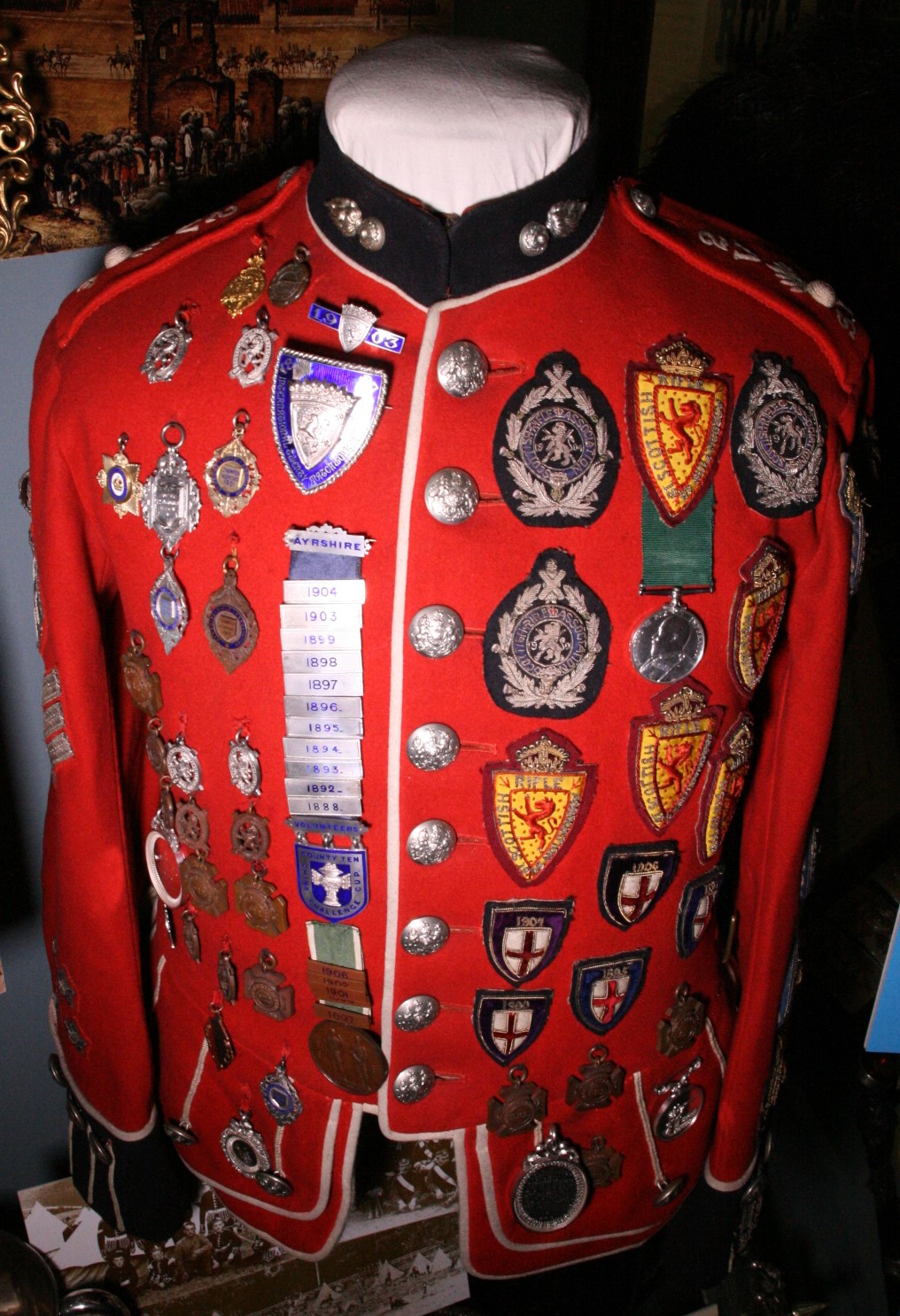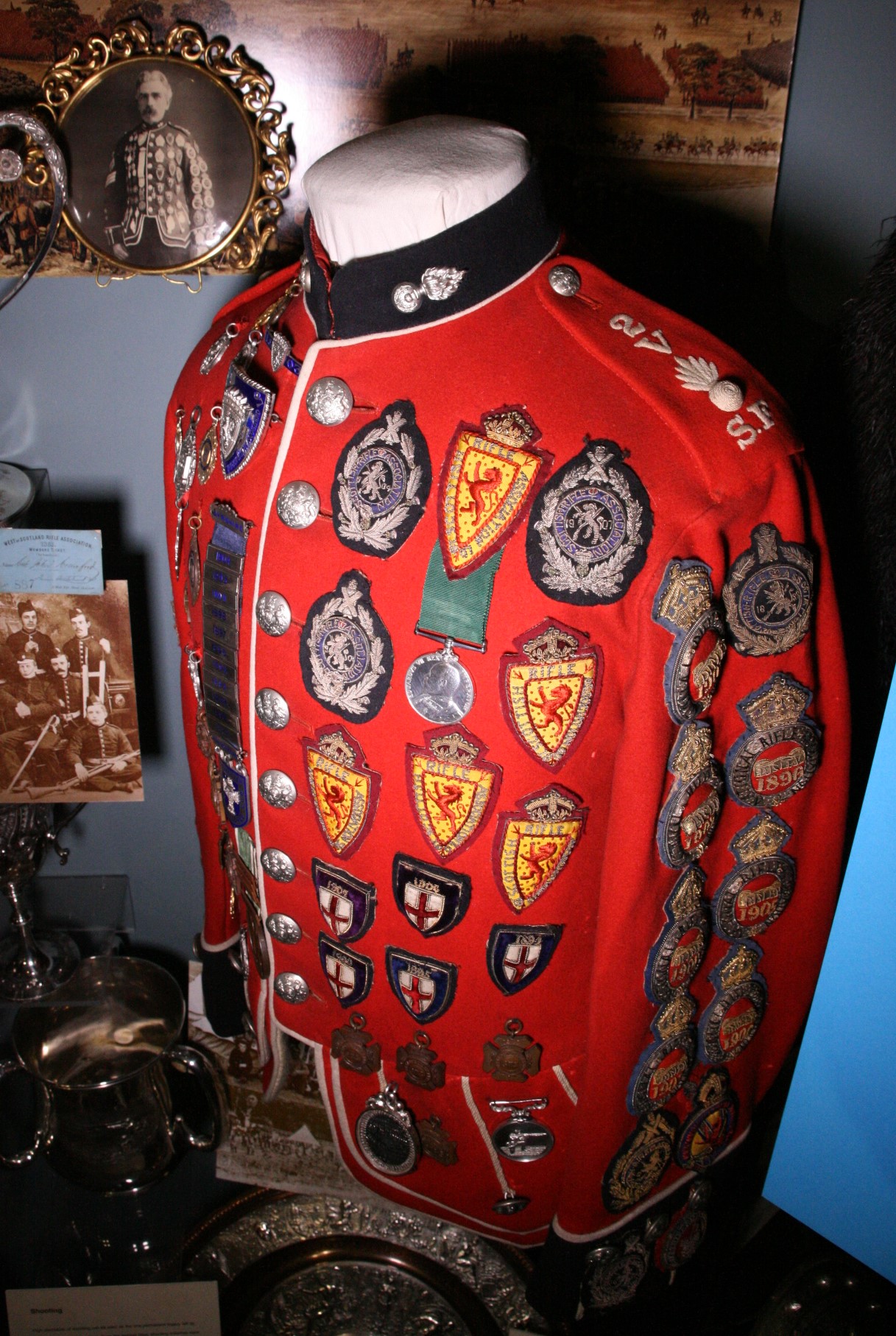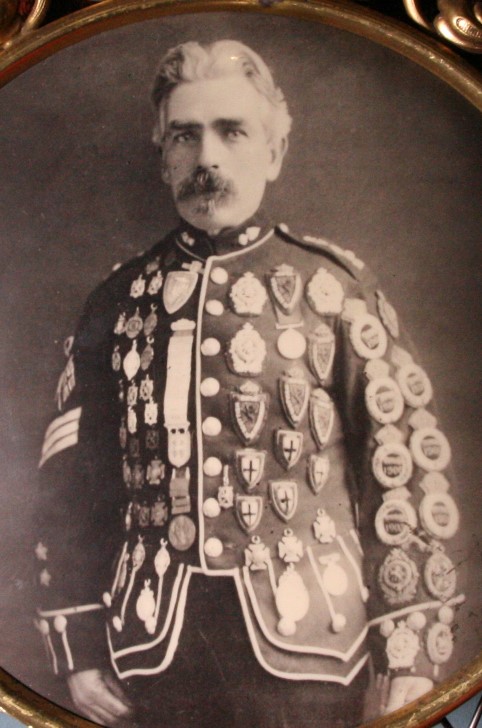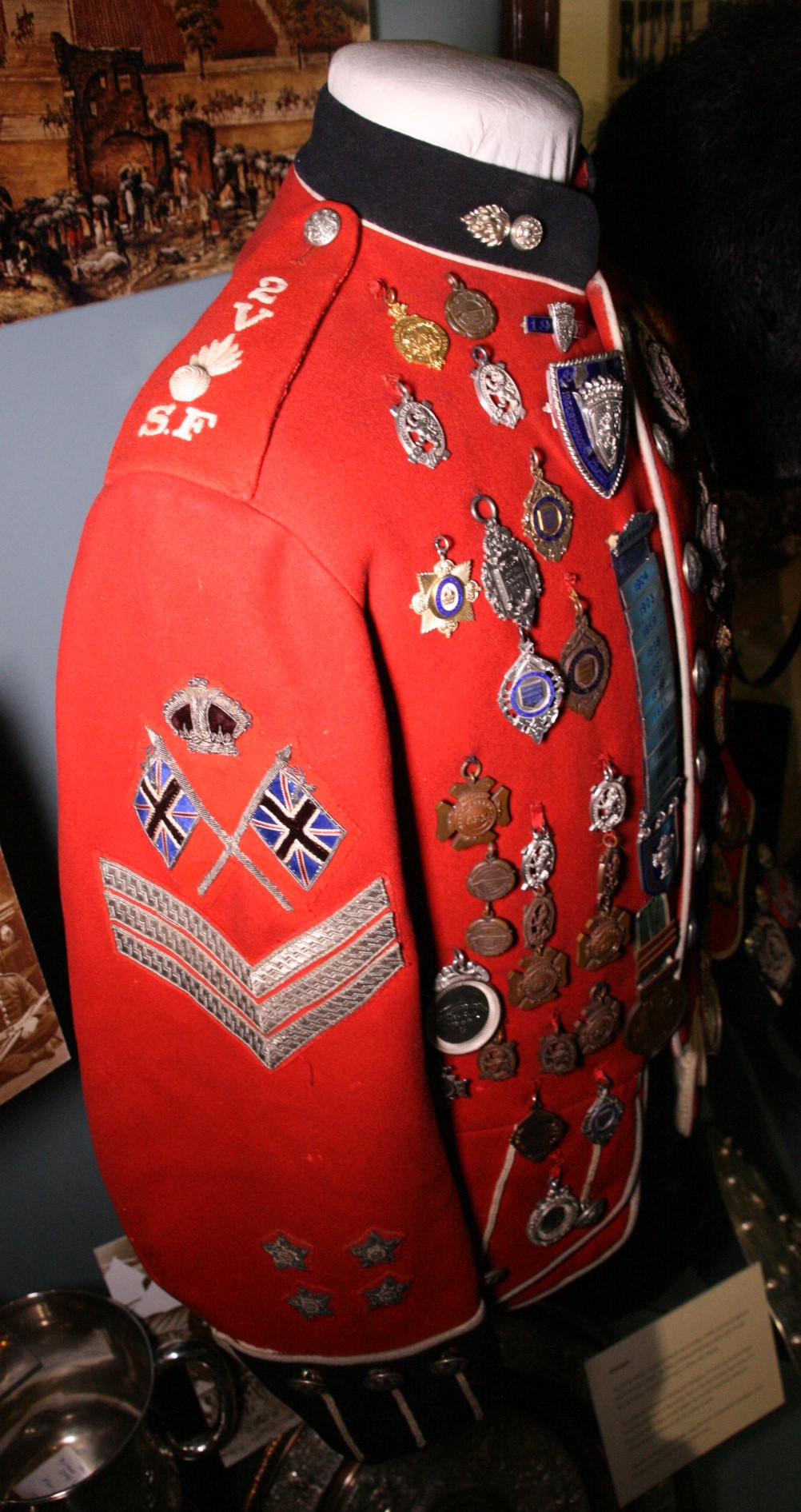Galloway’s Jacket
- You are here
- Home
- Museum blog
- Galloway’s Jacket
A cry that struck terror into the hearts of enemies of British soldiers sporting the iconic red coat. Indeed, the American patriot, Paul Revere, probably shouted: “The Redcoats are coming!” to warn of the imminent arrival of the British army in 1775, rather than the oft-quoted “the British are coming!”; which would have made little sense as everyone thought of themselves as British at that time in America.
“Galloway’s Jacket”, an exhibit in the Volunteers’ gallery of the Museum, is a red coat thought to be unique of its kind – virtually every bit of material is covered in medals and badges earned by the shooting prowess of its owner, Colour Sergeant James Galloway, of the 2nd Battalion, The Royal Scots Fusiliers. It is said that there has never been an accurate count of the awards on the tunic – no two tallies ever resulting the same number!
It is a common misconception that the iconic red coat of the British soldier was adopted so as not to show the blood; however, blood stains on red material actually dry to a blackish colour, which would rather defeat that object. The more likely reason is somewhat simpler and less gory: red tunics were officially adopted by Cromwell’s New Model Army, formed by Act of Parliament (the New Model Army Ordinance) in February 1645. A contemporary comment on the New Model Army dated 7 May 1645 stated “the men are Redcoats all, the whole army only are distinguished by the several facings of their coats”.
There are examples of red military clothing that pre-date this, notably the Yeoman of the Guard and Yeoman Warders, both formed in 1485, but none of these became the national uniform like the 17th century red coat or coatee. This red coat was to be worn by most of the most regiments of the British Army from the 17th to the 20th centuries; and is still worn on ceremonial occasions.
The original colour was a shade known as madder red, which prevailed until the more vivid shade of scarlet was adopted by all ranks from 1873 onwards, having previously been worn by officers, sergeants and all ranks of some cavalry regiments.
The positive public response to the red coats may have helped to keep the tradition alive – there was even a phenomenon known as Scarlet Fever, which mainly affected the fairer sex. Affected females, apparently, had an “excessive regard for clothing of a deep red hue … causing many women to swoon and throw caution to the wind at the sight of a military man turned out in his regimental finery”!




